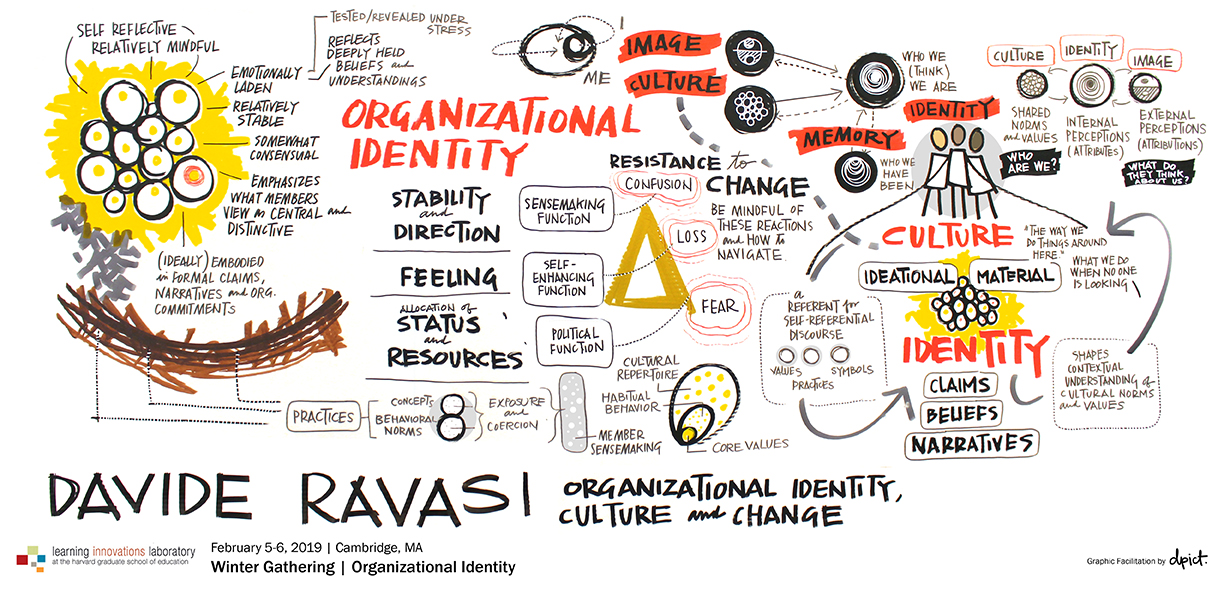 If organizational identity is a self-reflective relatively mindful answer to the question of who we are as a organization, were does this come from? Davide Ravassi’s work into organizational identity has examined various aspects of an org such as the emotional conceptualization, what is central and distinctive, deeply held beliefs, and claims and narratives that are reflective in the commitments. Interestingly, he has found that identity is revealed through conflict – when resources are scarce, when there is urgency, when there is some event that causes disruption. Also, foundational traits are acquired at the beginning of the organization: they are early imprints.
If organizational identity is a self-reflective relatively mindful answer to the question of who we are as a organization, were does this come from? Davide Ravassi’s work into organizational identity has examined various aspects of an org such as the emotional conceptualization, what is central and distinctive, deeply held beliefs, and claims and narratives that are reflective in the commitments. Interestingly, he has found that identity is revealed through conflict – when resources are scarce, when there is urgency, when there is some event that causes disruption. Also, foundational traits are acquired at the beginning of the organization: they are early imprints.
Question to Ponder: How can we use crises as a way to understand and reinforce who we are?
Organizational identity serves functions that get in the way of change. Identities give:
- Sensemaking: sense of stability and stability. Change creates confusion.
- Enhancement: members feel good about themselves. Change creates loss.
- Political: gives status and resources. Change creates fear.
And one can see similar dynamics in political changes, such as Brexit in the UK.
But how are organizational identities created? Davide laid out some basics of organizational identity formation. Who we are (identity) comes from interactions among who others say we are (image), the way we do things (culture), and who we have been (memory).
Culture is widely understood as relatively shared assumptions and values, embodied and manifested in a web of formal and informal practices, and discursive and material artifacts. It has ideational and material components. Culture is a referent for determining who we are. And identity, particularly organizational identity, shape members values, beliefs and practices. Davide shared his longitudinal study of Bang & Olfson and 3M to show how it shifted in response of identity threads over three decades. They used their historical roots of their identity to navigate changes in larger forces, including their culture.
So organizational identities change in a variety of ways. Change can be imposed, through restructuring. They can gradually lost through drift over time. Other times they can be skillfully introduced. He shared the cases of Alessi and British Airlines illustrate this but also other examples of when new identities created backlash.
Interested in learning more about these ideas? Get in touch and we will share additional insights. Already using some of these practices, share them with others by adding your voice in the comments section.

Add a comment